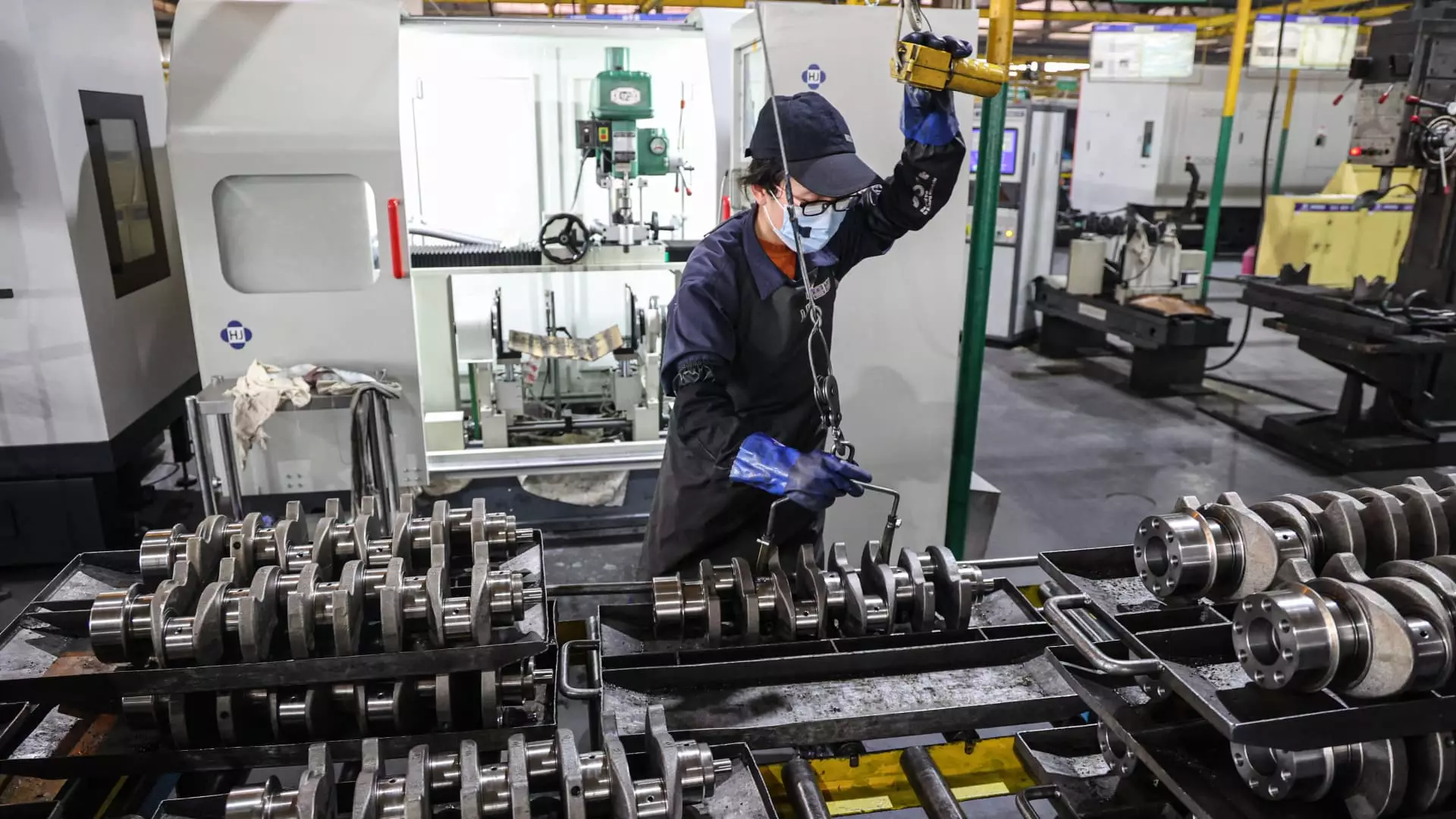In a world increasingly characterized by economic uncertainty and volatile geopolitical tensions, the recent data signaling a resurgence in China’s industrial profits is both intriguing and complex. The National Bureau of Statistics has revealed that industrial profits rose by 3% in April, marking a continuation from March’s 2.6% growth—an apparent sign of robust recovery in a beleaguered economy. But amidst this apparent success lies a multifaceted landscape that raises more questions than answers. This juxtaposition invites us to scrutinize the reality behind these numbers, particularly in light of the intense tariff warfare with the United States.
The superficial allure of a rise in industrial profits must not overshadow the anxiety creeping through the fibers of China’s economy. The statistics largely underscore the performance of certain sectors—such as technology and high-tech manufacturing—while painting an incomplete picture that may obscure deeper issues at play, namely, the distressing plight of state-owned enterprises (SOEs). These entities experienced an alarming 4.4% drop in profits over the first four months of the year, a stark contrast to the burgeoning profits of private and foreign-invested enterprises, which saw more favorable outcomes. This divergence signals a troubling trend: the state, often seen as the backbone of China’s economy, appears increasingly brittle in the face of competition and overarching economic pressures.
Tariff Wars: The Strategic Landscape
Enter the United States and its eye-watering tariffs imposed under the Trump administration. A staggering 145% levy on imports from China was a dramatic show of force that sought to disrupt the world’s second-largest economy. While these tariffs initially appear to present a formidable barrier, China’s agility in expanding its export markets illustrates a notable resilience. Despite all the bluster from Washington, the reality is that China’s industrial fabric is fraying yet still finds ways to adapt and innovate.
The latest trade agreements, indicating a reduction in tariffs—now down to 51.1% for Chinese imports and 32.6% for U.S. goods—could be perceived as a slight thawing in relations. Nevertheless, this diplomatic nicety with the U.S. does little to alleviate the longer-term challenges that Chinese industries face. The very fact that measures to soften these economic blows are necessary points to a larger issue: a decoupling that seems to threaten the long-term viability of the economic partnership between two powerhouses. The prospect of mutually assured destruction looms large over this complicated economic chessboard.
Profit Patterns Amidst Economic Woes
Observing the profit trends among various industrial sectors offers a troubling narrative. The mining sector, for instance, suffered a catastrophic 26.8% decline in profits year-on-year. In contrast, manufacturing and utilities sectors have continued to show resilience with profits growing at a modest pace. Such disparities suggest an uneven recovery, with certain industries thriving at the expense of others.
Moreover, the growth in profits from high-tech manufacturing, particularly within biopharmaceuticals and aircraft manufacturing, showcases China’s strategic pivot towards more advanced and sustainable industries. However, the paramount concern remains: these gains are overshadowed by the existing imbalances in demand. The noticeable slowdown in retail sales growth, currently at a meager 5.1%, presents a glaring warning sign of an economy experiencing supply-demand mismatches—an alarming indication of consumer sentiment and future growth prospects.
Analysts such as Weining Yu from the National Bureau of Statistics aptly note the “resilience” and “ability to withstand shocks” among these industrial sectors. Yet, to label these as mere forecasts of opportunity without addressing the root systemic challenges would be an egregious oversimplification.
A Glimpse Into the Future
As China navigates through these turbulent waters, it becomes increasingly clear that the upcoming months will be crucial. The nation’s industrial prowess is confronted with deficiencies such as declining demand and external uncertainties that beg reflection. Focused efforts on innovation and development of future-forward sectors may offer salvation, yet the enormity of challenges posed by global economic shifts cannot be understated.
The resilience demonstrated in industrial profits, while momentarily uplifting, illuminates a larger dialogue surrounding the fragility of an economy that is caught in a complex web of international trade politics and domestic pressures. Navigating these dual frontiers will undoubtedly shape China’s economic narrative in the coming years, revealing whether this current surge will represent a sustainable recovery or merely a fleeting moment of triumph amidst larger malaises.


Leave a Reply